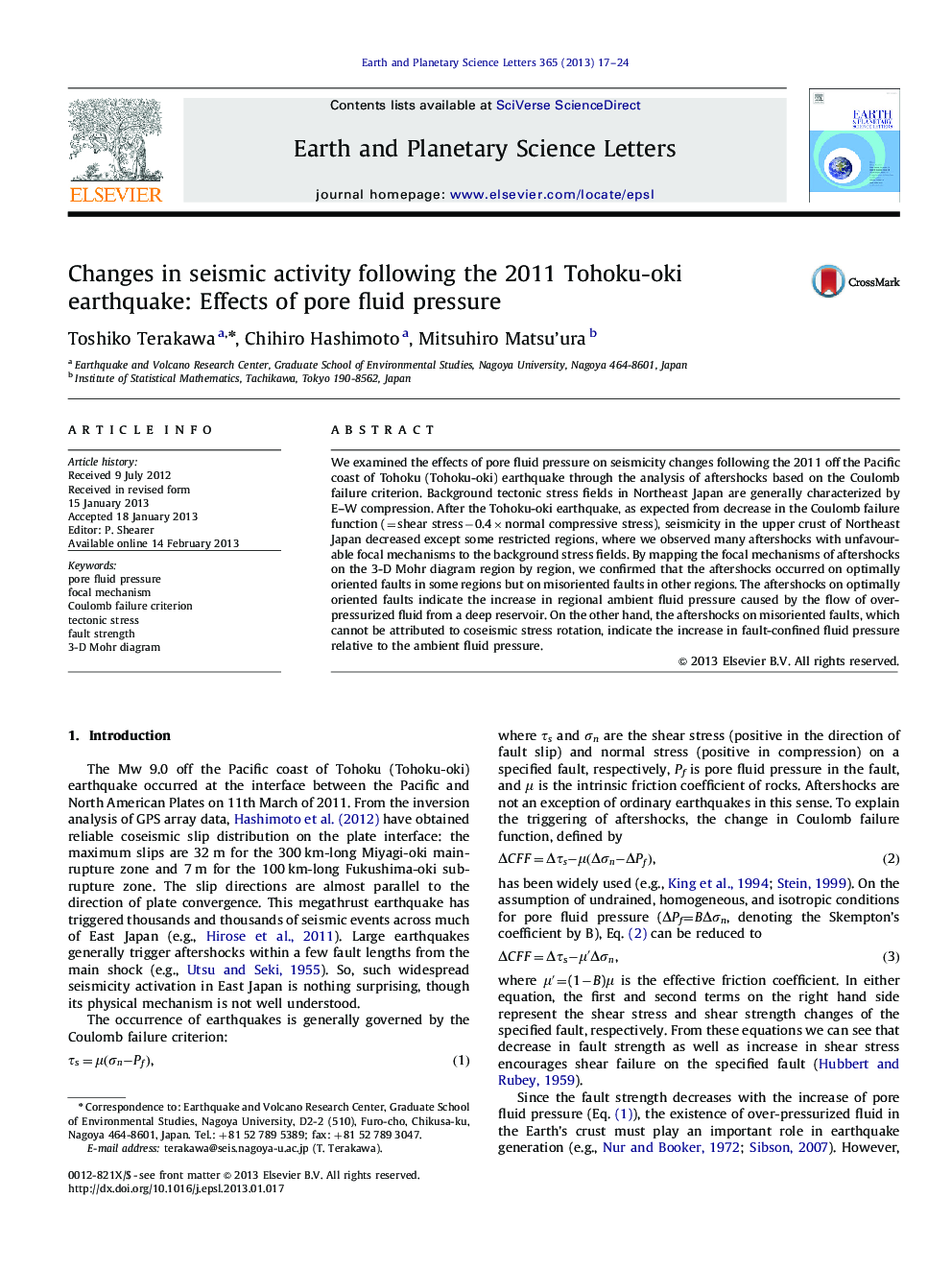| Article ID | Journal | Published Year | Pages | File Type |
|---|---|---|---|---|
| 4677125 | Earth and Planetary Science Letters | 2013 | 8 Pages |
We examined the effects of pore fluid pressure on seismicity changes following the 2011 off the Pacific coast of Tohoku (Tohoku-oki) earthquake through the analysis of aftershocks based on the Coulomb failure criterion. Background tectonic stress fields in Northeast Japan are generally characterized by E–W compression. After the Tohoku-oki earthquake, as expected from decrease in the Coulomb failure function (=shear stress−0.4×normal compressive stress), seismicity in the upper crust of Northeast Japan decreased except some restricted regions, where we observed many aftershocks with unfavourable focal mechanisms to the background stress fields. By mapping the focal mechanisms of aftershocks on the 3-D Mohr diagram region by region, we confirmed that the aftershocks occurred on optimally oriented faults in some regions but on misoriented faults in other regions. The aftershocks on optimally oriented faults indicate the increase in regional ambient fluid pressure caused by the flow of over-pressurized fluid from a deep reservoir. On the other hand, the aftershocks on misoriented faults, which cannot be attributed to coseismic stress rotation, indicate the increase in fault-confined fluid pressure relative to the ambient fluid pressure.
► We examined effects of pore fluid pressure on aftershocks of the Tohoku-oki event. ► We can estimate pore fluid pressure from focal mechanisms through the Mohr diagram. ► Aftershocks on optimal faults indicate the increase in ambient fluid pressure. ► The fault-confined fluid pressure is crucial for aftershocks on misoriented faults. ► The stress pattern inferred from aftershocks is biased due to over-pressurized fluid.
